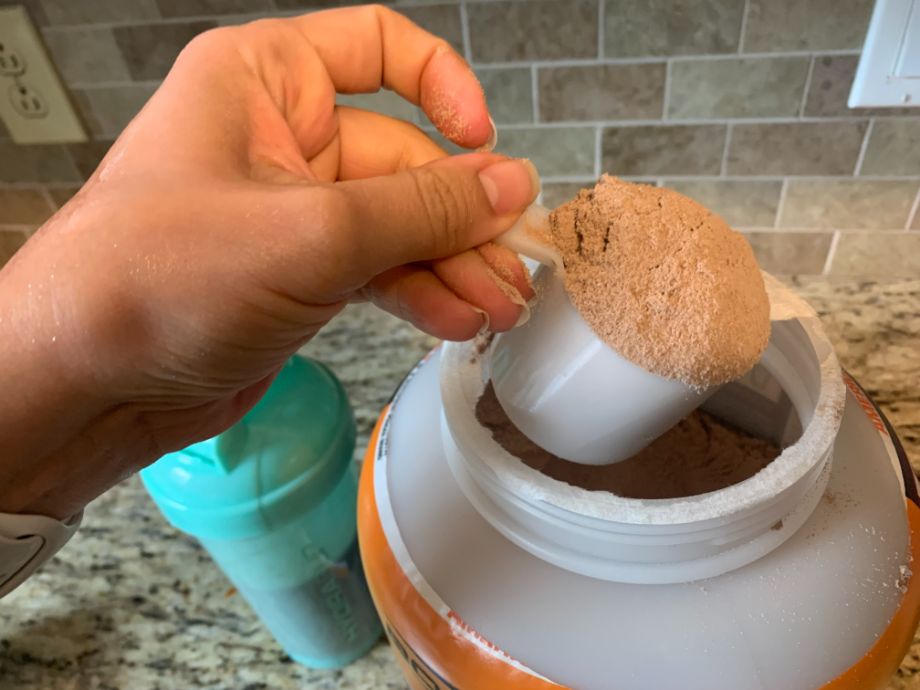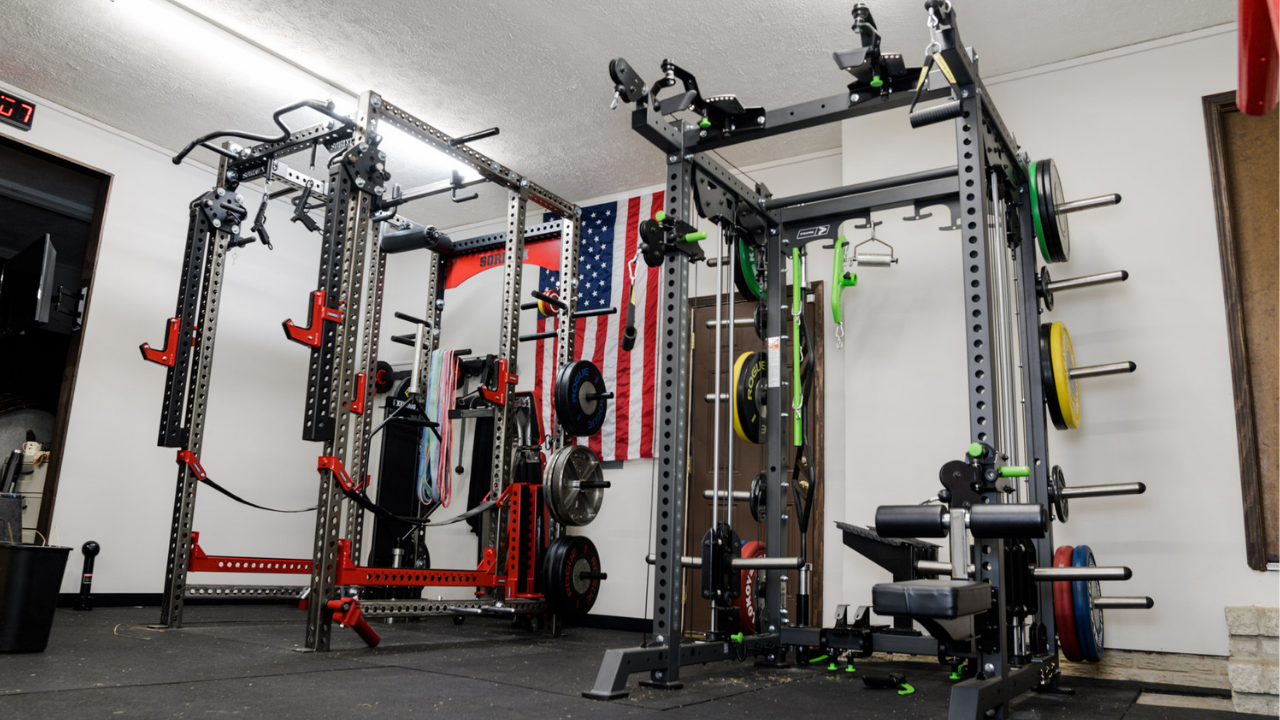No comprehensive core workout is complete without giving a little TLC to the obliques. Strengthening weak obliques is crucial for building functional core strength and contributing to a lean physique. The problem is that most ab exercises keep the focus front and center on the rectus abdominis, aka the muscle responsible for six-pack abs, and provide minimal activation to your poor oblique muscles.
That’s why today we have Kate Meier, NASM-CPT, USAW-L1, CF-L1, and GGR senior director of content, sharing her go-to move for targeting those oblique muscles and wreaking havoc on them—in a good way, of course!
Check out our guide on how to do side crunches right here!
How To Do the Side Crunch
They call this move the side crunch because, as you may have guessed, it involves basically the same movement pattern as the standard crunch exercise. However, instead of hitting the front of your abs, you’re working one side of your body at a time and targeting your often-neglected obliques.
How to do it:
- Lie down on your exercise mat on your right side with your legs fully extended, knees slightly bent, and your left foot stacked on top of your right foot.
- Place your right hand on the floor in front of you and your left hand behind your head.
- Lift your head and upper body toward the ceiling using your left oblique muscle.
- Squeeze the contraction, then release and return to the starting position.
- Repeat for reps, then turn onto your left side and repeat the set.
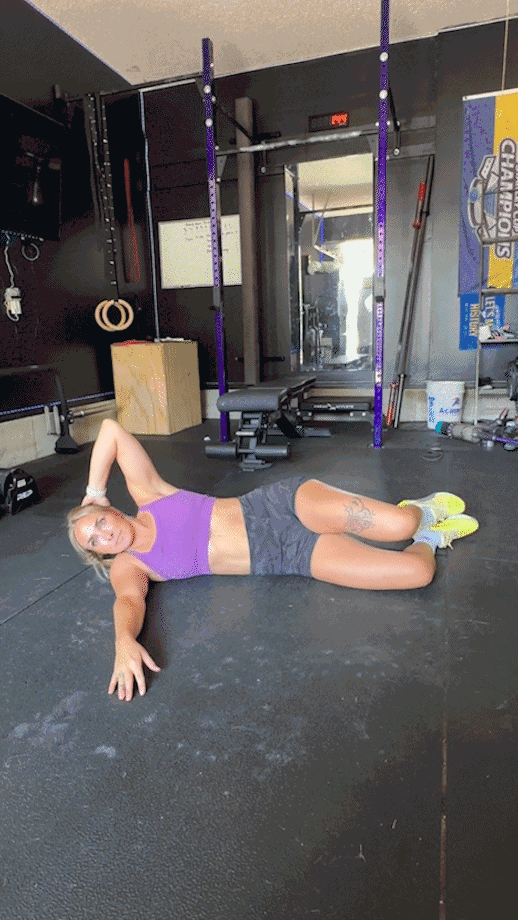
Modifications
- Dial it back: Side crunches are fairly beginner-friendly as is, but some newbies may find lying on their sides uncomfortable. For true beginners, scale down to regular crunches or assisted sit-ups to build core strength before progressing to the side crunch.
- Make it harder: Do you feel your standard side crunches on the stable floor aren’t challenging enough? Slide a stability ball between you and the floor and do your side crunches that way. The instability will force your core muscles to work harder to hold a steady position. You can also graduate to cable crunches with an oblique twist or the wood chop exercise (see below) using a cable, dumbbell, or resistance band.
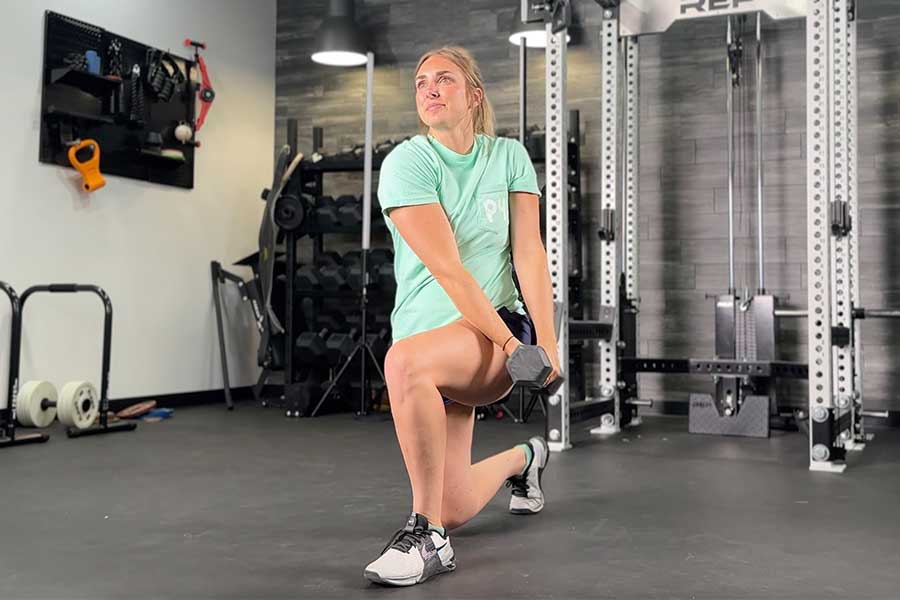
RELATED: Beginner Core Workout
How To Do Side Crunches At Home
One of the biggest perks of side crunches and other bodyweight exercises is that they require virtually no equipment to perform them. All you need is a little bit of floor space and one of the best exercise mats, and you’re good to go!
So, side crunches need no modification or equipment to fit right into your home workout.
Side Crunch Variations
Once you’ve mastered the standard side crunch, here are few variations you can utilize.
Side Plank Crunch
The side plank is already an effective isometric oblique exercise, but the side plank crunch takes it to the next level by adding a crunching movement.
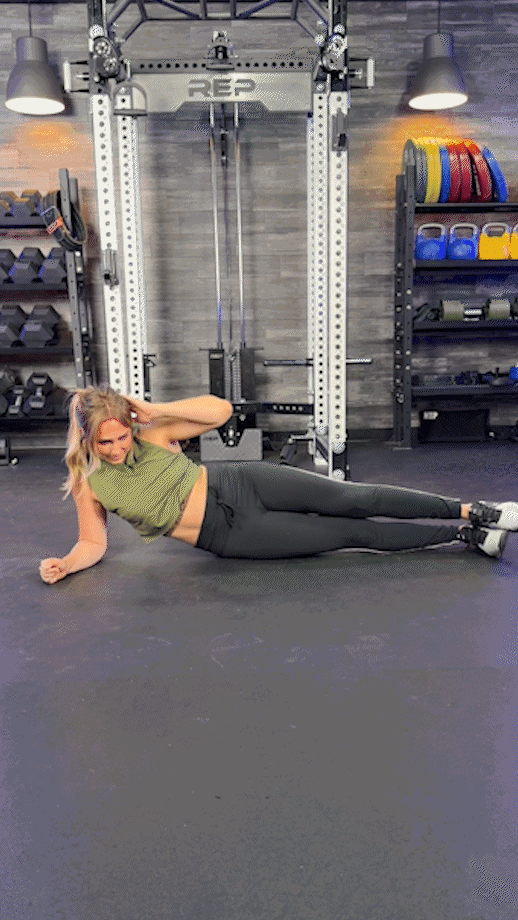
Stability Ball Side Crunch
A study in the Journal of Clinical and Diagnostic Research1 found that core exercises performed on a Swiss ball produced greater muscle activation than those performed on a mat. That’s because adding an element of instability forces your core to work harder to maintain proper form, making it a quick and easy way to up the ante.
RELATED: Our Ultimate 10-Minute Ab Workout
Standing Side Crunch
The standing side crunch seems silly at a glance, but after a few repetitions, you’ll see what makes them so effective.
Since you’re doing these in a standing position, you can also incorporate one of the best resistance bands or the cable machine to increase the exercise’s total effect.
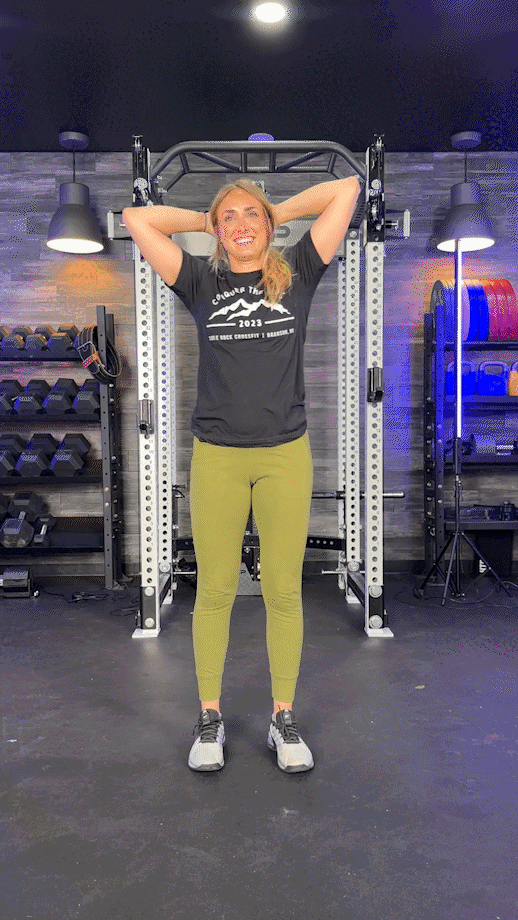
Side Crunch Alternatives
The side crunch is a killer move for targeting the external obliques, but it’s far from the only core exercise to include in your ab workout. Work in a few of our side crunch alternatives to really get those abdominal muscles a good burn!
Reverse Crunch
Why do it: “Reverse crunches, like side crunches, target an often-neglected region of the abs: the lower rectus abdominis,” says Kate Meier, NASM-CPT, USAW-L1, CF-L1. “They’re also gentle on your neck, making them a great alternative to both the side crunch and regular crunch exercises.”
How to do it:
- Lie on your back with your arms at your sides and your legs fully extended.
- Press your palms into the floor and lift your legs toward the ceiling.
- Bring your knees into your chest.
- Squeeze the contraction in your abs.
- Release, then slowly return to the starting position.
- Repeat for reps.
RELATED: Lower-Ab Workouts
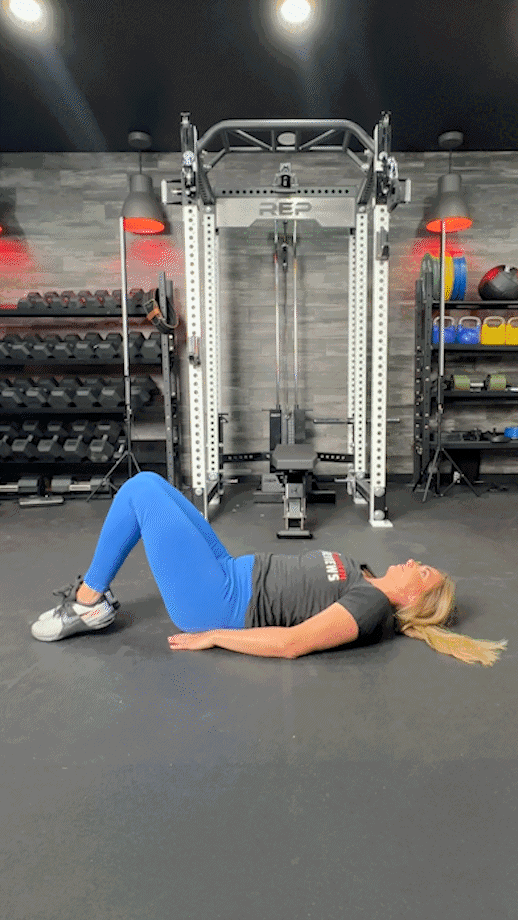
Bicycle Crunch
Why do it: A study performed by the American Council on Exercise2 determined that bicycle crunches were the most effective ab exercise for targeting the rectus abdominis and ranked second best for hitting the obliques. So, they’ll make an excellent addition to just about any ab workout.
How to do it:
- Lie face up on the floor with your hands clasped behind your head.
- Press your lower back into the floor, tighten your core, lift your legs into the air, and bend your knees to form 90-degree angles.
- Lift your head and shoulder blades off the floor.
- Bring your left elbow and right knee toward each other, straightening your left leg as you move.
- Return to the starting position, then bring your right elbow and left knee together while extending your right leg.
- Alternate sides for each rep until your set is complete.
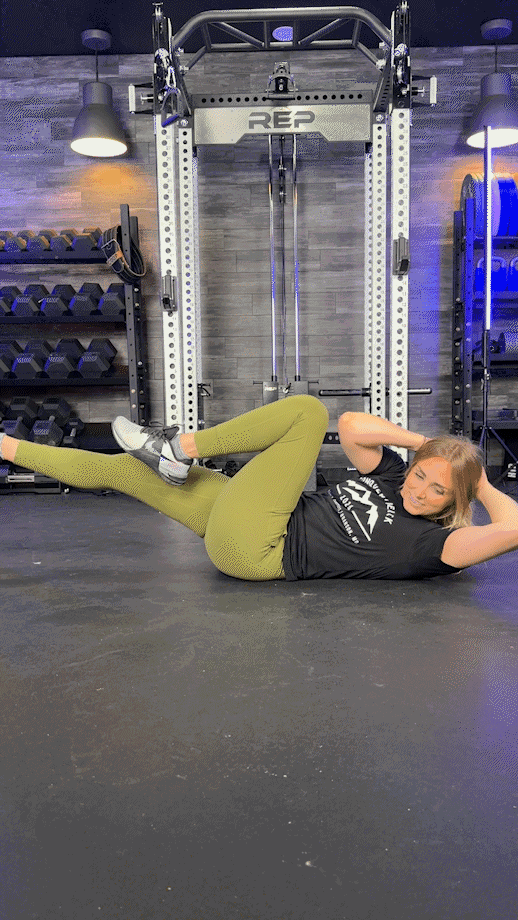
Russian Twist
Why do it: Whereas crunches, oblique crunches, and other crunch variations use hip flexion to target the core muscles, Russian twists use rotational movement to totally torch your obliques. The unique positioning also allows you to hold a dumbbell, kettlebell, or medicine ball for some added resistance, helping this movement pack even more punch.
How to do it:
- Sit on the floor with your feet planted and your knees slightly bent.
- Brace your core, lean back, and lift your feet a few inches off the floor.
- Twist your torso to one side, tapping the floor next to you with your hands or your choice of free weight.
- Twist back to center, then twist to the opposite side and touch the floor again.
- Continue alternating sides on each rep until your set is complete.
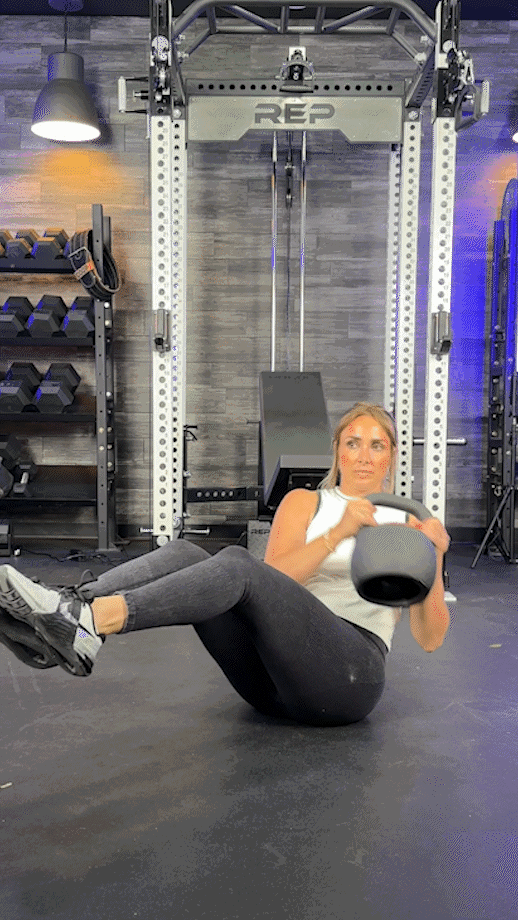
Wood Chop
Why do it: Speaking of rotational movements, the wood chop exercise uses precisely that to target your obliques among other upper-body muscle groups. You’ll essentially get a full-body workout from this functional movement.
How to do it:
- Hold a dumbbell or kettlebell with both hands in front of your body and your arms fully extended.
- Bring the dumbbell up, across your chest, and over your shoulder as though lifting an ax.
- Swing the dumbbell with control down across your body toward your hip.
- Repeat for reps, then switch sides and repeat the set.
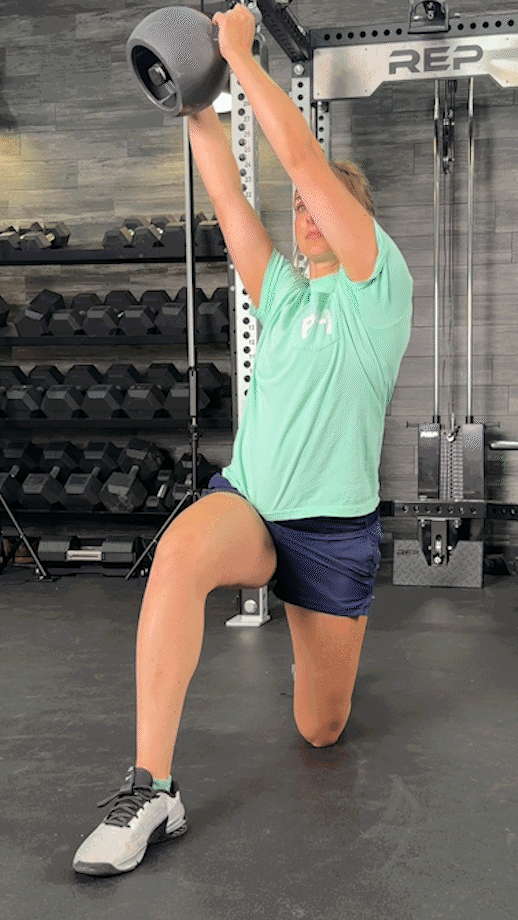
Benefits of the Side Crunch
The side crunch is great at hitting those often-overlooked obliques, which may be beneficial in a variety of ways. Here are our favorite benefits associated with doing side crunches.
Boosts Functional Strength
People exercise for various reasons: weight loss, building a lean physique, supporting general health and wellness—you get the picture. Functional strength can benefit anyone because it allows you to do everyday movements with less effort.
RELATED: What Is Functional Fitness?
“Your oblique muscles support the lumbar spine, enable rotational and side-to-side movements, and contribute to greater overall core strength and stability,” says Kate. “Since many popular ab exercises offer minimal activation to the obliques, exercises like the side crunch become crucial for ensuring you don’t leave them out.”
According to Sports Health3, “side position exercises are better for oblique…recruitment.” So, don’t stick to sit-ups and crunches exclusively; work side crunches and other oblique exercises into the mix, too!
May Help Reduce Low Back Pain
The World Health Organization4 estimated that 619 million people globally were affected by low back pain in 2020, making it the single leading cause of global disability.
According to a study in Clinical Biomechanics5, the oblique muscles are active during prolonged periods of sitting and standing. The study determined that patients suffering from low back pain had “relatively small oblique abdominal muscle strength,” giving credence to the theory that strengthening the oblique muscles may help reduce lower back pain.
That’s not all; a cross-sectional study published in the Journal of Musculoskeletal and Neuronal Interactions6 observed “significant correlations” between abdominal muscle activity and trunk movement, meaning greater core strength and stability should lead to less low back pain.
Correct Muscle Imbalances
Generally speaking, you always, always, always want to do the same number of reps on each side when performing unilateral exercises. However, since the side crunch focuses on a single side, you can feasibly use the exercise to correct strength and muscle imbalances.
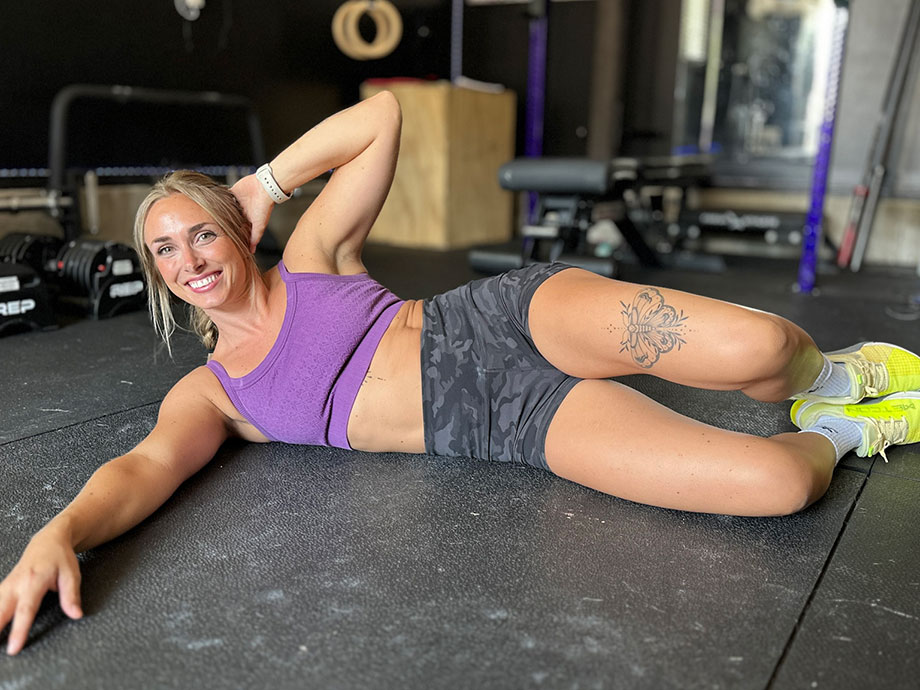
Why would you have oblique muscle imbalances in the first place? Well, think about it—do you favor one side over another when throwing a ball or swinging a bat? How about when you reach over your shoulder to grab your phone off the charger to silence that spam call?
In everyday life, you may favor one side, and that’s normal. The same holds true in athletics, as according to the Journal of Sports Science and Medicine7, sprinters and hurdlers exhibited asymmetry in muscle morphology and trunk rotational strength.
“An exercise like the side crunch may correct those imbalances through judicious programming and monitoring,” says Kate. “Most people may never need to worry about these discrepancies, but elite athletes may want to consider the implications here and consult a qualified coach or personal trainer to learn more.”
Common Side Crunch Mistakes
You won’t enjoy any of the benefits above if you’re performing the side crunch without proper form. Know what to do and what to avoid by keeping these common mistakes in mind.
Straining Your Neck
Proper form for the side crunch involves placing a hand behind your head and supporting your head and neck, not yanking on it. When the going gets tough, it’s common to use your arms to sort of “pull yourself up” off the floor.
“Pulling your neck out of alignment is a recipe for neck pain and could contribute to an injury,” says Kate. “If you find yourself pulling hard on your head to eke out those last reps, consider cutting the rep scheme down to a number you’re able to complete without compromising your form.”
Using Too Much Momentum
When done correctly, the side crunch involves contracting your obliques and using hip flexion to lift your body off the floor. To experience the full effect, you’ll want to engage your core muscles and squeeze the contraction on every rep.

That means using your abs to lift yourself off the floor and to control the descent back down. Flopping yourself on and off the floor like a fish out of water looks funny and diminishes the impact of the exercise.
Avoid losing out on those sweet, sweet gains by lifting and lowering yourself slowly and with control.
Twisting Your Torso
“When you’re doing side crunches, you want to move up and down in basically a straight line,” says Kate. “You use your abs and hips to come up, crunch, and lower straight back down.”
So, if you’re channeling your inner Chubby Checker and doing the twist, you’re probably putting more undue stress on your lumbar spine instead of alleviating potential low back pain.
Keep your form strict and straight, avoiding rotational movement at all costs.
Muscles Worked by the Side Crunch
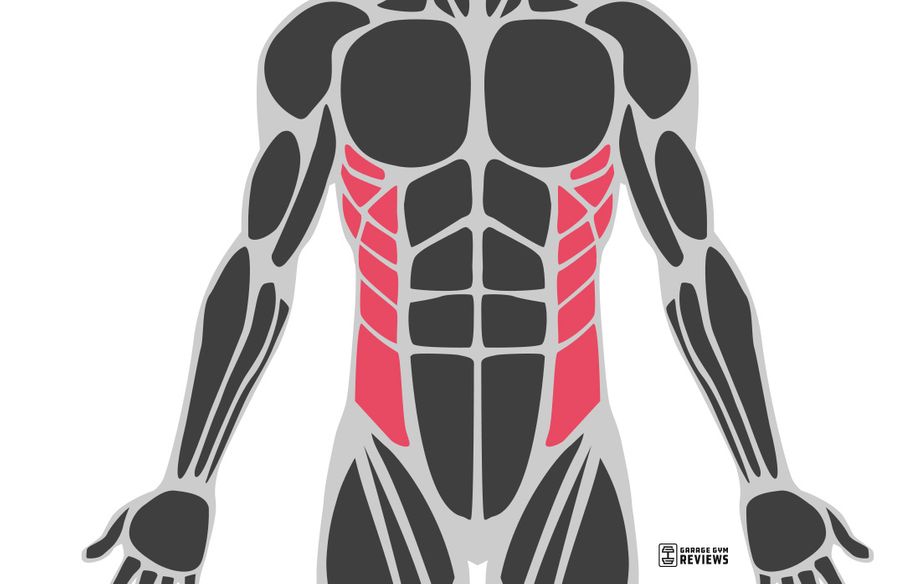
The side crunch exercise primarily works your oblique muscles, but those aren’t the only muscles getting worked by this movement. Here’s a quick rundown:
- External obliques: These muscles run bilaterally along the outer perimeter of your abdominal muscles. They support your spine and enable both rotational and lateral movements. That’s what makes them most integral for this specific exercise.
- Internal obliques: The smaller, less superficial counterpart to the external obliques, the internal obliques also contribute to trunk rotation and spinal support.
- Rectus abdominis: You’ll get more bang for your buck doing standard crunches or sit ups, but the rectus abdominis—aka the six-pack muscles—will get some activation during the side crunch.
- Glutes: Believe it or not, your derriere is helping during the side crunch, too. This crucial lower-body muscle supports your lower back, stabilizes your core, and enables various hip movements.
How To Do Side Crunches: Final Thoughts
No comprehensive ab workout is complete without giving some time and attention to the unsung heroes of the abdominal muscles: the obliques.
There are many exercises designed to target and strengthen this crucial muscle group, but the side crunch is among the best. The side crunch:
- Provides a ton of muscle activation throughout your obliques
- Contributes to improved core strength and stability
- May reduce low back pain
- May correct abdominal muscle imbalances
- Is beginner-friendly and requires no equipment
So, don’t let your obliques get weak; work the side crunch into your next ab workout and let the gains reign. Until next time, fit fam!
How To Do Side Crunches: FAQs
Do side crunches slim your waist?
Side crunches may slim your waist, but shouldn’t be the only tool in your belt for this.
The reason they may slim your waist is because working them leads to strength gains and lean muscle growth, which, when combined with diet, enough rest, and proper hydration, can contribute to a more narrow physique.
That’s not all; the fitness community has previously dispelled spot reduction as a myth, but new research may suggest otherwise. A 2023 study published in Physiological Reports8 determined that “abdominal endurance exercise utilized more local fat than treadmill running, indicating that spot reduction exists.” Though, we’re still not ready to declare this “myth” busted.
Regardless, you’ll want to combine your side crunches and abdominal workouts with cardio, strength training, and nutrition in order to maximize your chances of achieving the results you’re looking for. A multifaceted approach is often best when it comes to fitness.
How many side crunches should you do a day?
How many side crunches will work best for you depends on many personal factors, but starting with two to three sets of 10 reps per side should suffice at first. As you progress, work your way up to larger sets of approximately 20 or 30 reps.
RELATED: How Many Reps to Build Muscle
Can side crunches make you “boxy”?
Some people are hesitant to work their obliques directly because they incorrectly believe that building your obliques will make them look “boxy” or “bulky.” This is the same logic that keeps people from picking up free weights for fear of magically becoming a bodybuilding behemoth.
“Working your obliques strengthens and tones your waistline, often contributing to a more narrow appearance rather than a boxy one,” says Kate Meier, NASM-CPT, USAW-L1, CF-L1, and GGR senior director of content. “Remember—you can use side crunches to support your aesthetic fitness goals, but the improved core strength and stability will work wonders for many of your health and fitness goals.”
Don’t let fear and myths keep you from cultivating greater core strength; add side crunches into your workouts and build those obliques!
References
- Srivastav P, Nayak N, Nair S, Sherpa LB, Dsouza D. Swiss Ball Versus Mat Exercises For Core Activation of Transverse Abdominis in Recreational Athletes. J Clin Diagn Res. 2016;10(12):YC01-YC03. doi:10.7860/JCDR/2016/23102.8972
- Anders, M. American Council on Exercise (ACE)-sponsored Study Reveals Best and Worst Abdominal Exercises. American Council on Exercise. Accessed August 9, 2024.
- Escamilla RF, Lewis C, Pecson A, Imamura R, Andrews JR. Muscle Activation Among Supine, Prone, and Side Position Exercises With and Without a Swiss Ball. Sports Health. 2016;8(4):372-379. doi:10.1177/1941738116653931
- GBD 2021 Low Back Pain Collaborators. Global, regional, and national burden of low back pain, 1990-2020, its attributable risk factors, and projections to 2050: a systematic analysis of the Global Burden of Disease Study 2021. Lancet Rheumatol. 2023: 5: e316-29.
- Snijders CJ, Bakker MP, Vleeming A, Stoeckart R, Stam HJ. Oblique abdominal muscle activity in standing and in sitting on hard and soft seats. Clin Biomech (Bristol, Avon). 1995;10(2):73-78. doi:10.1016/0268-0033(95)92042-k
- Polat M, Demirsoy N, Tokgöz N. Association between abdominal muscle activity and lumbar muscle morphology, and their role in the functional assessment of patients with low back pain: A cross-sectional study. J Musculoskelet Neuronal Interact. 2022;22(3):375-384.
- Adams L, Pace N, Heo A, Hunter I, Johnson AW, Mitchell UH. Internal and External Oblique Muscle Asymmetry in Sprint Hurdlers and Sprinters: A Cross-Sectional Study. J Sports Sci Med. 2022;21(1):120-126. Published 2022 Feb 15. doi:10.52082/jssm.2022.120
- Brobakken MF, Krogsaeter I, Helgerud J, Wang E, Hoff J. Abdominal aerobic endurance exercise reveals spot reduction exists: A randomized controlled trial. Physiol Rep. 2023;11(22):e15853. doi:10.14814/phy2.15853





